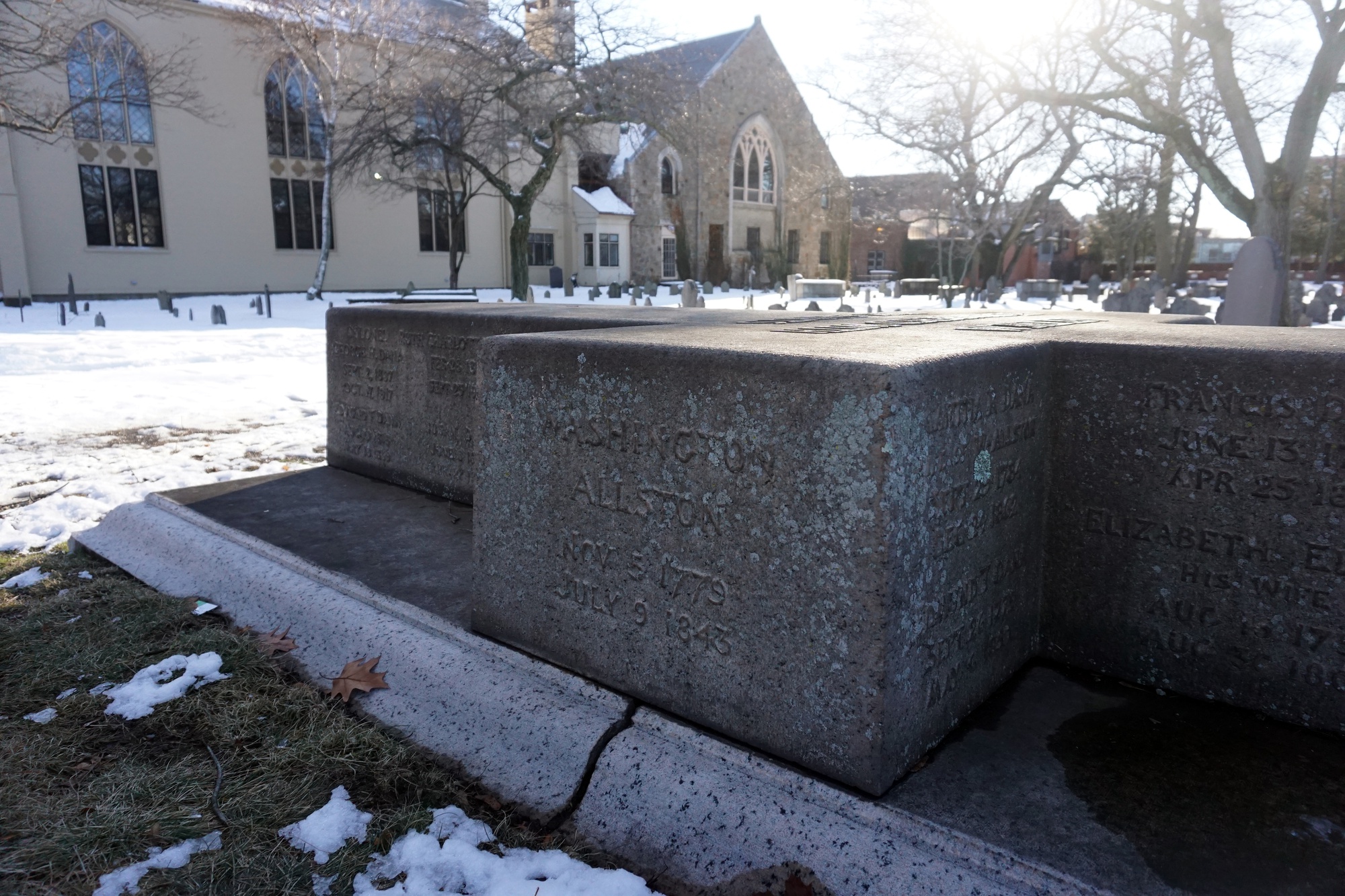
Allston Who?
Plausible origin story for the neighborhood of Allston, Mass.: A bucolic Puritan utopia welcomes all, picks up the colloquial moniker “All’s Town.” The name sticks, eventually shortening to “Allston.”
It’s a fair assumption about a place some call one of Boston’s most diverse neighborhoods—but it’s inaccurate. Allston, Mass., is actually the namesake of a largely forgotten Cambridge artist, Washington Allston. In fact, historian William Marchione says he believes Allston is the only community in the country named in honor of an artist.
Allston was born in Nov. 1779 in South Carolina, and grew up in Newport, R.I. He started drawing at a young age. In a letter compiled in his biography, he reflected that “I used to draw before I left Carolina, at six years of age,” and he also used to enjoy “making little landscapes about the roots of an old tree in the country.”
Allston attended Harvard, where he “gave himself up to painting and poetry,” as classmate and friend Leonard Jarvis wrote in a letter.
In the same letter, Jarvis also remarked upon Allston’s affable personality, writing that “those who hated each other most heartily—and there were good haters in our class—and who agreed in nothing else, united in respectful and kindly feelings toward him.”
Allston evidently made quite the impression on his fellow students.
“His countenance, once seen, could never be forgotten,” continued Jarvis, praising Allston’s “smooth, high, open forehead, surrounded by a profusion of dark, wavy hair, his delicately formed nose, his peculiarly expressive mouth, his large, lustrous, melting eye.” Allston had a face, according to his friend, which was “irresistibly attractive, and which, united with his gentle, unassuming manners, secured him the good will of all his classmates.”
Allston flourished at Harvard, but was less adept at finding a direction for the future.
On the one hand, Jarvis, Allston’s stepfather, was a physician and “was earnest with him to follow that profession,” as Jarvis recalls. But his filial duty was at odds with what was already being called “his genius.”
Ultimately, Allston could not resist the pull of the latter course. He continued painting after college, graduating from Harvard in 1800 and traveling around Europe to hone his artistic abilities for more than a decade.
During this time, Allston earned praise for the way he conveyed mood in his landscape works, even garnering the moniker of America’s first Romantic painter. In addition, he sharpened his writing skills, publishing a collection of poetry called “The Sylphs of the Season with Other Poems,” as well as a Gothic novel called “Monaldi.”
His admirers included Ralph Waldo Emerson, Samuel Taylor Coleridge, Margaret Fuller, and Oliver Wendell Holmes, who described Allston as “an angel of light.”
Joseph Henry Green praised Allston in letters, writing, “Who, indeed, who had enjoyed the inestimable privilege of converse with such a man, could ever forget the purity, the depth and simplicity of his mind?”
In 1808, Allston married his first wife, Ann Channing, who later passed away in 1815. In 1818, he moved to Cambridge, where he stayed for 25 years. He remarried in 1830 to Martha Dana.
Allston had sacrificed his wealth to fuel his passion for his artistic work. “The love I bear my art you well know; no one could love it more; and I have given proof of it in the sacrifice I have made to it of my fortune,” he wrote in an 1832 letter to a friend, John Stevens Cogdell.
Allston died in 1843, at age 63. He was buried in The Old Burying Ground, located in Harvard Square next to First Parish Church.
In 1867, when the Boston and Albany Railroad opened a rail station and post office in East Brighton, the neighborhood of Allston came into being. Some have even claimed that the town was named specifically for Allston’s painting, “Fields West of Boston,” which included an illustration of the fields in Allston.
After Allston’s death, John Greenough wrote in a letter, “I feel that the memory or fame of Allston can never die. I feel that the years to come will raise a proud monument to him in every heart that appreciates the noble art to which he devoted all the best powers of his intellectual, moral, and physical nature.”
Evidently, Greenough’s prediction came true—far more tangibly than he imagined. Today, 29,000 people call this living monument to Washington Allston their home.
— Magazine writer Truelian Lee can be reached at truelian.lee@thecrimson.com. Follow her on Twitter @truelian_lee.
— Magazine writer Jacqueline P. Patel can be reached at jacqueline.patel@thecrimson.com. Follow her on Twitter @jppatel99.


